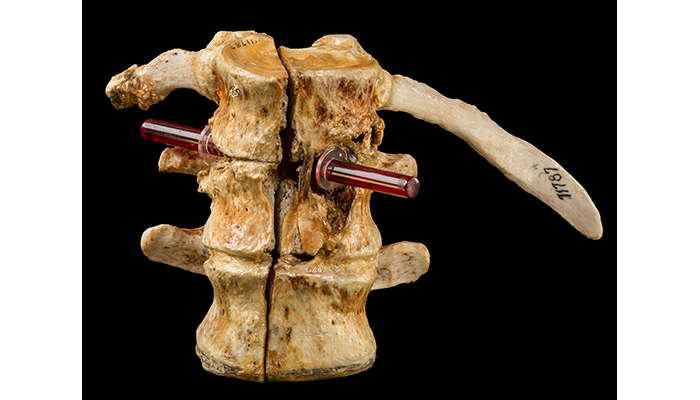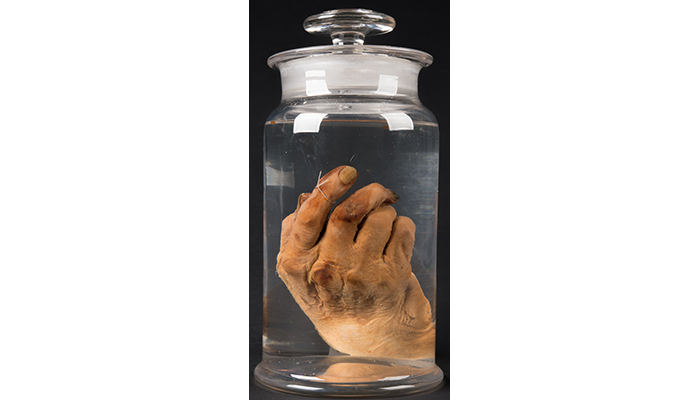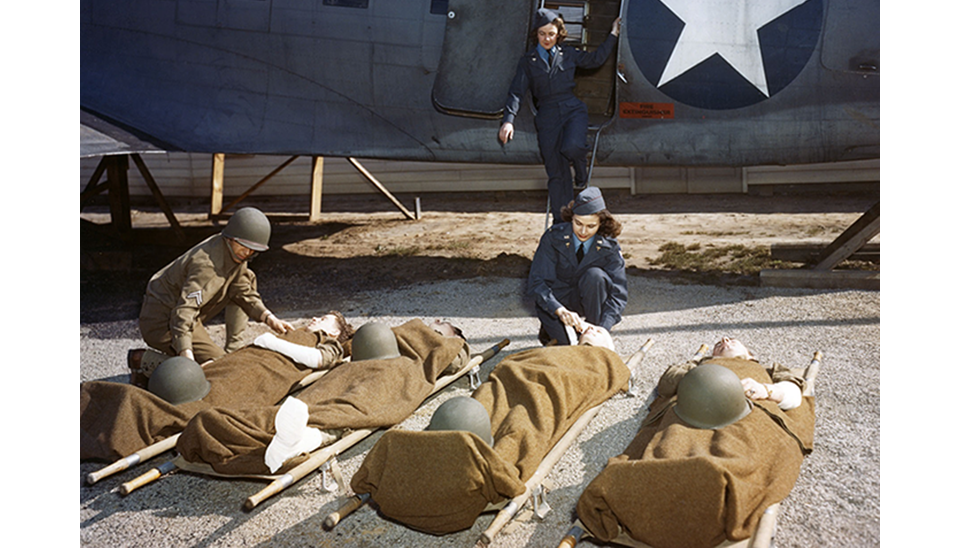Dr. Daniel S. Lamb (1843-1929), a U.S. Army pathologist with a distinguished career at the Army Medical Museum (AMM)–now the National Museum of Health and Medicine–from 1865 to 1920, made contributions that went above and beyond the call of duty. Lamb's legacy lives on not only through his historical impact, but also in physical form with the preservation of his right hand as a part of the museum's Anatomical Collections.
During his 55 years at AMM, Lamb was considered one of the most competent autopsy pathologists in Washington, D.C. Among his notable investigations were the high-profile autopsies of President James Garfield (d. 1881), his assassin Charles Guiteau (d. 1882), and Vice President Henry Wilson (d. 1875).

Vertebrae of President James A. Garfield exhibiting a gunshot injury, collected by Dr. Lamb during autopsy. A dowel marks the bullet entrance through the right posterolateral aspect of L1 and exit through the left anterolateral aspect of T12 and L1. (170323-D-MP902-002: Department of Defense photo by Matthew Breitbart)
During the Civil War, Lamb was a hospital steward serving surgeon Edwin Bentley (1824-1917) in Alexandria, Virginia. Bentley, a mentor to Lamb, noticed his aptitude for medical studies and encouraged him to pursue a medical degree.
In 1865, while completing his medical degree at Georgetown Medical School, Lamb was assigned to the AMM as an assistant to surgeon J.J. Woodward. Upon graduating in 1868, Lamb was promoted to acting assistant surgeon and later was appointed as pathologist in 1892. Logbooks show that Lamb conducted his first autopsy in May 1866 and his last in February 1919. During the final post-mortem, Lamb was assisted by his physician wife, Isabel Haslup Lamb (1864-1936).1
Lamb played a critical role in preserving the museum's pathological collections. Between 1883 and World War I, museum curators had all but lost interest in gross pathology. Nonetheless, Lamb continued to contribute specimens (see figure 1) and remained the sole person to carry out daily duties managing the tissue collections and keeping them organized.

Figure 1. This cranium was collected by Dr. Daniel S. Lamb in March 1897 due to the bilateral fusion (ankyloses) of the woman's jaw. (NMHM, PS 11269)
Noteworthy was Lamb's directive to have his body examined in the same manner he had examined others. His longtime colleague, Dr. Aleš Hrdlička of the Smithsonian, was asked to officiate.
On April 21, 1929, Lamb died of pneumonia in the hospital at the U.S. Soldiers Home in Washington, D.C. He was 86. The following day, an autopsy was carried out by former curator Maj. G.E. Callendar and curator Maj. J.E. Ash in the presence of his widow. A certification letter by Ash notes that Lamb's skeleton and right hand were removed for preservation in the museum and his brain was to be sent to the Wilder Brain Collection at Cornell University.
The whereabouts of Lamb's skeleton is a mystery. Except for Ash's certification letter, no record exists that it was ever cataloged. His right hand, however, was recently discovered in the collection by the author in 2016 (see figure 2). Lamb's name was not captured during previous inventories and was only discovered after the reference was found in the Otis Historical Archives.2

Figure 2. Recently rediscovered right hand of Dr. Daniel S. Lamb that was removed at autopsy and preserved in a glass jar. It is stored at the National Museum of Health and Medicine. (160311-D-MP902-010: Department of Defense photo by Matthew Breitbart)
A note in the file indicates that Dr. Lamb used his right hand to hold a knife during his work. This specimen, originally collected due to the presence of an anatomical tubercle, now serves as a symbol of the man who used that very hand to diligently carry out work for the museum. With it he populated the shelves of the museum with specimens of morbid anatomy and preserved them for future generations.
Resources
National Museum of Health and Medicine. Silver Spring, MD, Otis Historical Archives, OHA 4
National Museum of Health and Medicine. Silver Spring, MD, Otis Historical Archives, OHA 212.08
Relevant Links:
A History of the United States Army Medical Museum, 1862-1917. Compiled from the official records by Dr. D.S. Lamb.
https://collections.nlm.nih.gov/bookviewer?PID=nlm:nlmuid-12710920R-bk
Dr. Daniel S. Lamb (1843-1929) of the Army Medical Museum by Brian Spatola
https://doi.org/10.7205/MILMED-D-16-00014




